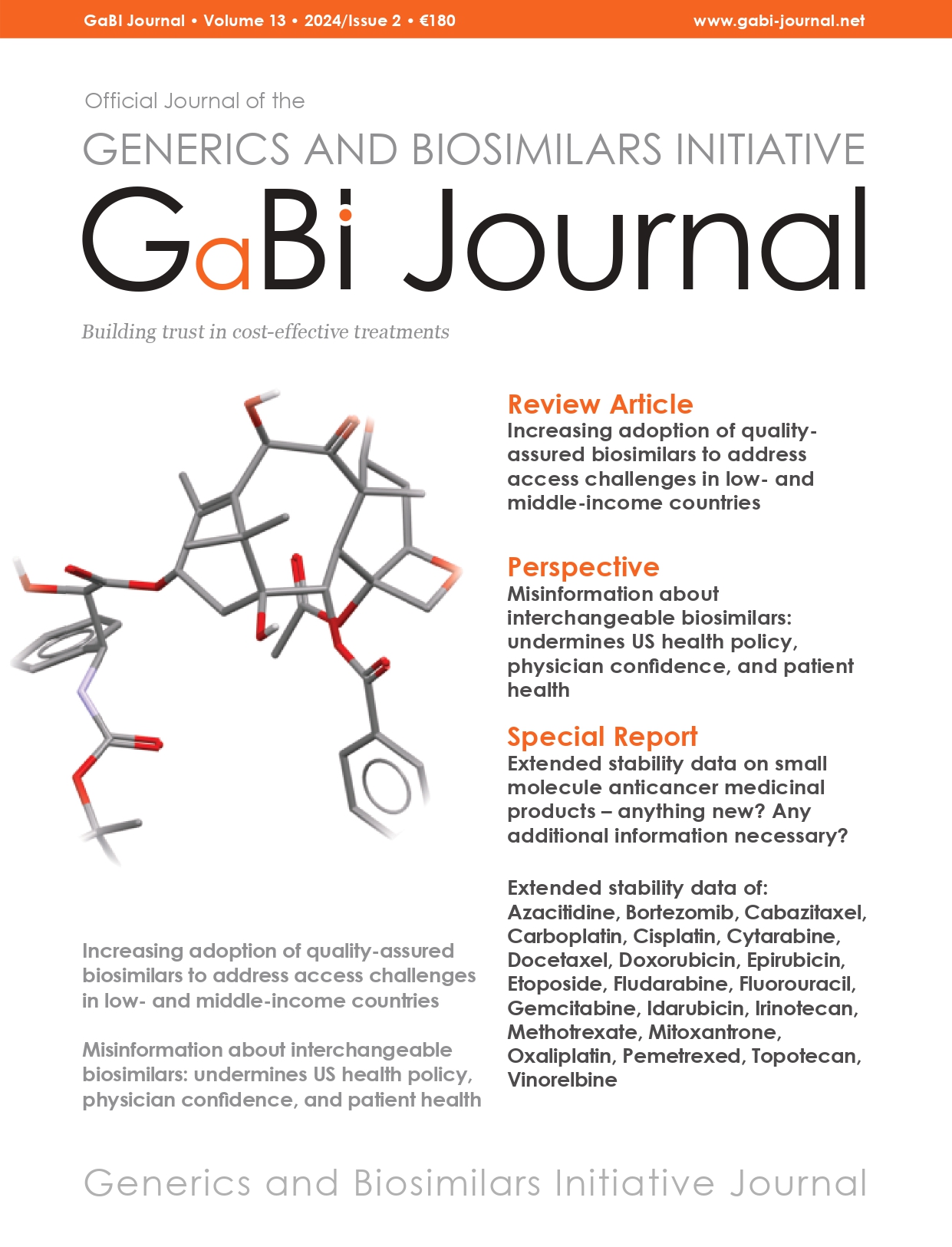Interchangeability of gabapentin generic formulations in The Netherlands: summary of a comparative bioavailability study
Published: 2013/12/17
Abstract
The registration of generic formulations in the EU is governed by regulatory authorities in the respective European countries. Before a generic drug can be registered, bioequivalence to the branded formulation has to be demonstrated, i.e. 90% confidence intervals of area under the curve (AUC), and Cmax should fall within the 80–125% acceptance range. Comparative studies with other generics are not required. In order to establish whether a generic medicine is interchangeable with other generic formulations under current regulations, the Dutch regulatory authority conducted a single- dose, four-way crossover comparative bioavailability study with four gabapentin formulations, i.e. the branded formulation and three generic drugs, as test medication. The results showed that all four formulations were bioequivalent to each other, and that no interchangeability issues would result from switching.
Introduction
Generic medicines have to be bioequivalent to the marketed branded medicine, in accordance with requirements from the local medicine regulatory authorities. The standard criterion for bioequivalence is that the 90% confidence intervals of ratios for AUC and Cmax between generic and branded medicines should be within 80–125%. After approval, the generic drugs can be considered therapeutically equivalent to the branded drugs, and used as alternatives in clinical practice.
In The Netherlands, many generic medicines are available, and switching between generics is common practice. Guidelines do not require demonstration of bioequivalence between generics, although safety and effectiveness issues may result from switching between generics. When one generic drug is exchanged for another, so-called ‘drift’ may occur, where both generic drugs show bioequivalence with the innovator drug, but not necessarily with each other, i.e. the 90% confidence intervals for this comparison may not conform to the 80–125% criterion. Therefore, the Dutch regulatory authority (CBG-MEB) thought it prudent to investigate the consequences of this policy for currently marketed generic formulations. In 2012, a clinical bioequivalence study was conducted to compare gabapentin exposure after administration of the gabapentin-branded formulation (Neurontin) and three generic formulations currently marketed in The Netherlands. This four-way crossover design allowed a robust assessment of the potential ‘drift’ during generic–generic exchange for gabapentin, and this study has recently been published in the Journal of Clinical Pharmacology and Therapeutics.
Comparative bioavailability study
The study was designed as a single-dose, four-way crossover comparative bioavailability study. Twenty-four healthy participants were recruited (14 women, 10 men; mean age 35 years). Three generic formulations were used as test medications, in addition to the branded Neurontin 800 mg gabapentin. After oral administration of gabapentin, blood samples were taken up to 48 hours after dosing. After bioanalysis, plasma gabapentin concentrations were used to calculate pharmacokinetic parameters (AUC0-t, AUCinf, Cmax, Tmax, t1/2, residual area and Kel) for each formulation and participant, using WinNonLin (Version 5.3). The 90% confidence intervals for AUC and Cmax were calculated in accordance with EMA Guideline on the Investigation of Bioequivalence, using SPSS 18.0. This clinical study (NTR2964) was approved by an Independent Ethics Committee in The Netherlands.
Conclusions
The results showed that all six paired comparisons of the gabapentin drug formulations, i.e. between Neurontin and each generic drug, as well as between the generic drugs; met the bioequivalence criteria, with all 90% confidence intervals for Cmax and AUCs falling within the acceptable 80–125% range. Furthermore, the safety profiles were acceptable and comparable between formulations. On the basis of the outcome of this study, gabapentin generics are considered to be exchangeable with Neurontin, and also with other generics.
This study confirms the conclusions of a previous study indicating that gabapentin generics are likely to be interchangeable in clinical practice, based on simulations of the 90% confidence interval, using data in the original registration file.
To our knowledge, this is the first clinical comparative bioavailability study comparing multiple generic formulations to investigate issues relating to interchangeability between generics. The findings help narrow the knowledge gap on generic–generic interchangeability, and should consolidate general trust in generic formulations, and specific patient and physician trust in gabapentin generic formulations. As continued use of branded drugs is a major contributor to increased healthcare costs, substitution by generics will lead to a long-term reduction in costs.
For patients
In this research, we have focused on the possibility that patients may be switched from one generic drug to another. This switch is not investigated during the registration procedure. The findings of this study indicate that gabapentin generics are therapeutically equivalent, and can therefore be switched with confidence.
Conflict of interest
Yang Yu, Marc Maliepaard, Cees Neef, and Steven Teerenstra are appointed at the Dutch Medicines Evaluation Board. No further conflicts of interest.
Abstracted by Dr Yang Yu, commented by Dr Marc Marliepaard, both are contributing authors to GaBI Journal, view their manuscript published in GaBI Journal, 2013, Issue 2:
Editor’s comment
If you are interested in contributing a research paper in a similar area to GaBI Journal, please send us your submission here.
If you would like to receive a PDF copy* of the article, please send us an email.
*For profit organizations subjected to a fee
Related articles
Generic antiepileptic drugs bioequivalent to brand-name drugs
Bioavailability comparison of brand-name and generic acetylcysteine in China
Source: www.gabionline.net



Could you please me send me a copy of the article.
Thank you.